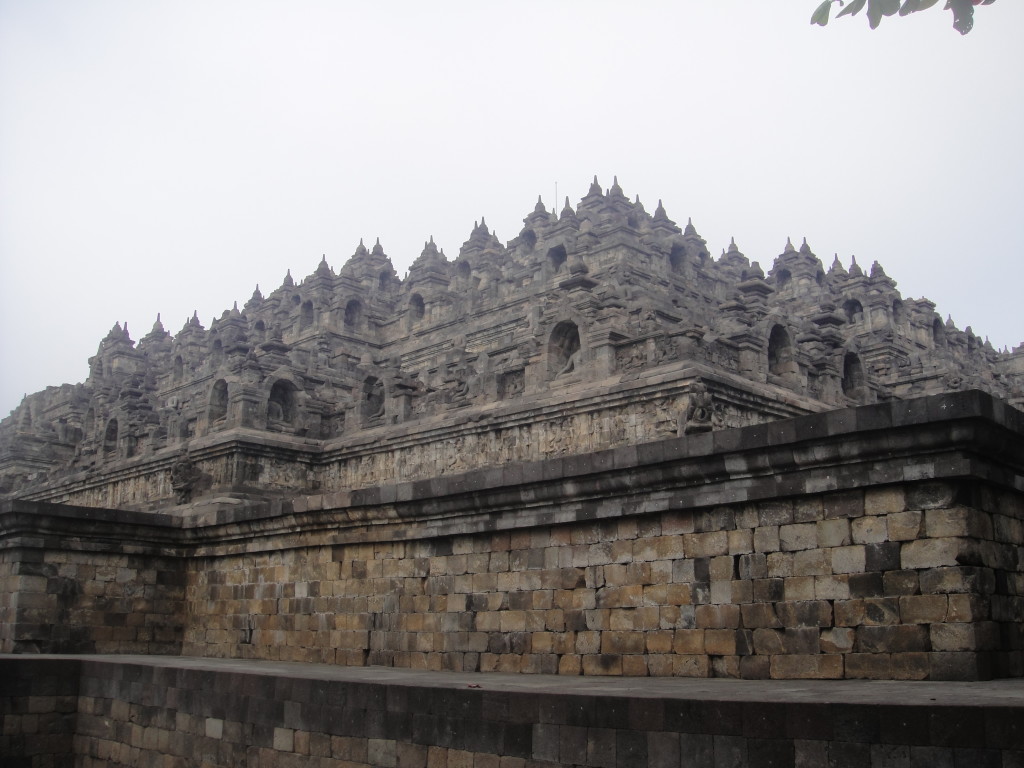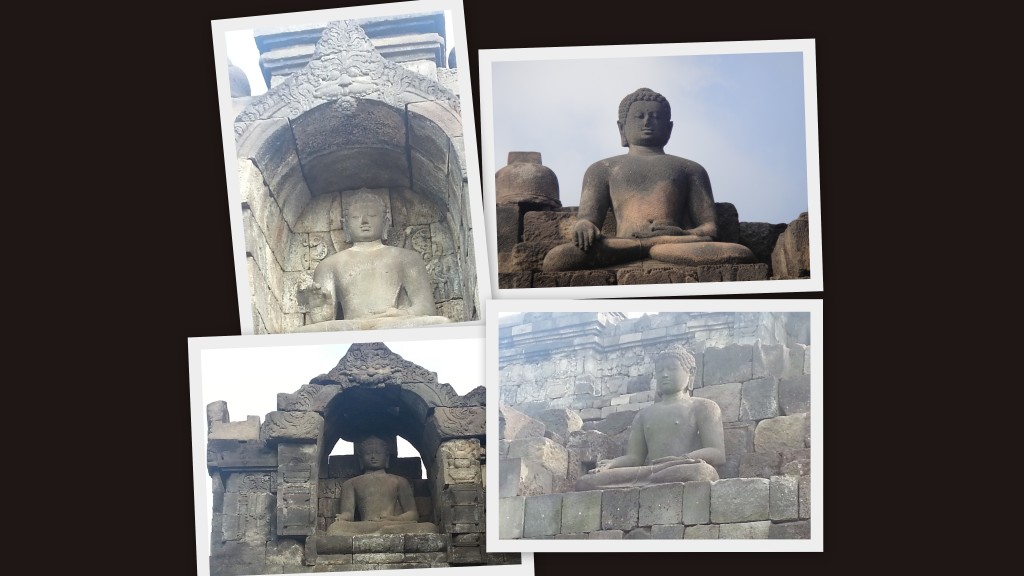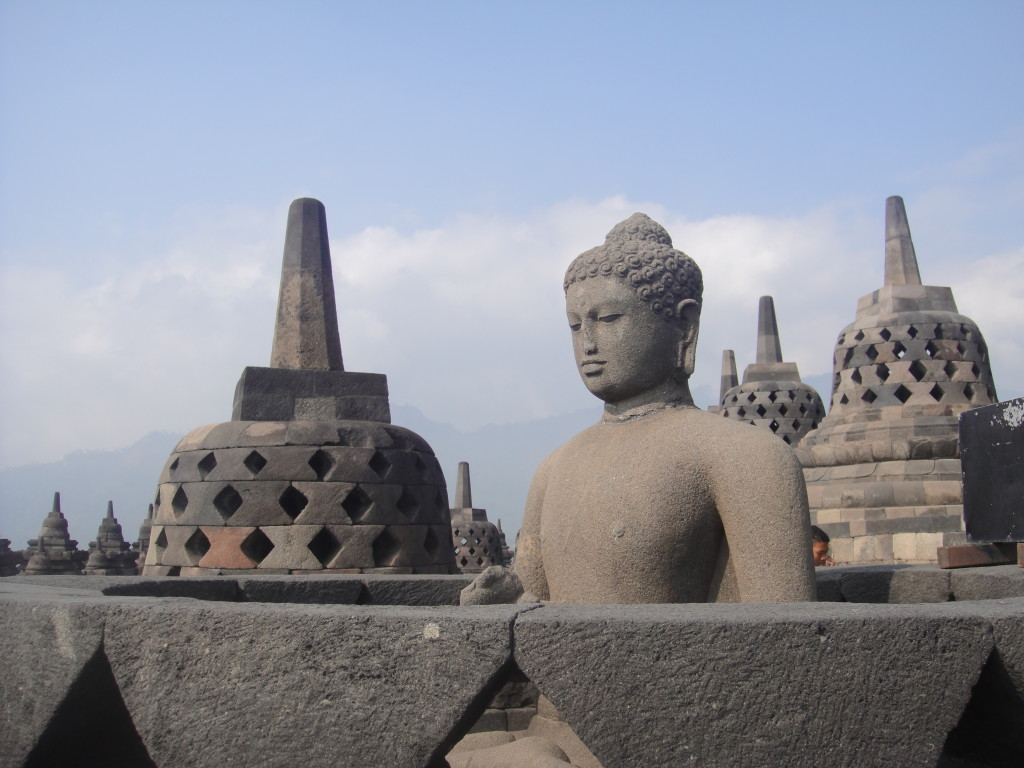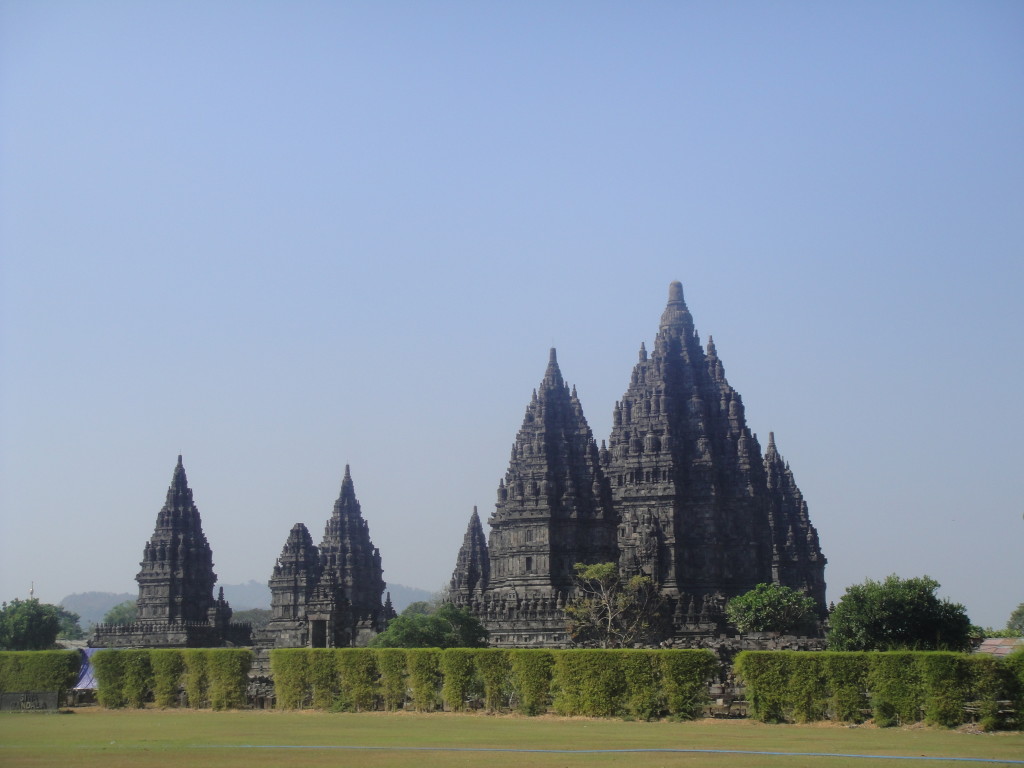If you are anything like me, a product of the techie era, the word Java conjures up an image of a computer language. Just like most of us I did learn to pronounce “Hello World” in Java. And so did the earlier home erectus which announced itself to the world as the “Java Man” and said Hello World albeit in the real sense of the word, welcoming us to Java and to the Earth for that matter.
Java is an interesting place. It is one of the biggest and intriguing islands in Indonesia. It has many fascinating aspects to it not the least of which is the museum of man located at Sangiran near the town of Solo, has active volcanoes like Mount Merapi. The island has a rich cultural heritage and is completely true to the Indonesian/Old Javanese motto of ‘Bhinneka Tunggal Ika‘ aka ‘Unity in Diversity’. Nowhere is the unity of diversity so beautifully demonstrated than in outskirts of the town of Yogyakarta through the Unesco world heritage sites of Borobudur and Prambanan. These sites while reminiscent of a bygone golden era of Buddhism and Hinduism respectively still retain their charm and aura in the modern land where Islam is predominant.
Borobudur, crafted in 9th century, was left to the ravages of nature in between the 12th and 14th centuries, resurrected through untiring efforts in 20th century is simply put a sight to behold. The temple is the world’s largest Buddhist temple, the most visited place in Indonesia and once their you will easily understand why. Still used for pilgrimage, the site is constructed as a traditional Buddhist mandala with the aim of guiding a disciple on the path of Nirvana. The various sections like the ‘Kamadhatu’, ‘Rupadhatu’ and ‘Arupadhatu’ increasingly leads the pilgrim to gaining control over his desires and directs them towards the centre of their being leading to Nirvana.
The site is constructed on a rectangular foundation with multiple levels constructed on top of it. Every level has a corridor that depicts the lives and times of Buddha and in doing so inspires us on how to live our lives. If the reliefs are read as recommended, one gets to walk nearly 5 km to soak in all the relief panels. Even if you are aware that God is omnipresent, Borobudur will still come and shock your senses. Buddha, Buddha, Buddha everywhere. Both literally and figuratively. On first glance all the Buddha statues seem same. However that is just on the surface. The hand positions of the Buddhas differ ever so slightly to impart a different meaning to them.
During our visit to Borobudur, we definitely got overwhelmed by the crowds and it took us multiple visits to the temple to get our bearings. Every time we walked we saw something new, and it all started to come alive. One thing that we have learned is never to hurry and come back and soak the environment and allow the monuments to reveal itself at its own pace. One can’t see more by hurrying and invariably the essence passes by. We were glad that we had time at our hand and gumption in our hearts to make the multiple trips at different times of the day.
While Borobudur was a proponent of Buddhist influence, Prambanan is the Hindu counterpart on the island of Java. After being totally bamboozled by the Ramayana Ballet which was simply superb, we needed to explore the 9th century temple for ourselves. Amazing what a little extra effort does to make your experience unforgettable. In this case we reached the temple at the opening time and has the place very nearly to ourselves for an elongated period of time before the crowds rushed in. The temple architecture was typical Hindu style with temples devoted to the Hindu Trimurity (Brahman, Vishnu, Mahesh) with all the accompanying temples. The whole complex was massively destroyed in the 2006 earthquake and massive restoration is still being undertaken.
Borobudur and Prambanan are a living proof of the glorious heritage of Buddhism and Hinduism through South east Asia. The fact that they have been preserved and are cherished in a modern day land dominated by Islam is a beautiful example of Unity in Diversity. In demonstrating this unity the birth place of the early man sends out a stark reminder to the rest of the world to rise above the narrow minded bigotry which engulfs us. The world and the modern man sure has a lot to learn from the Javan’s ‘Bhinneka Tunggal Ika’.




Leave a Reply